The Royal Navy’s newest nuclear-powered attack submarine, HMS Agamemnon, has successfully submerged for the first time during trials at BAE Systems’ Barrow-in-Furness shipyard, according to the company.
The three-day “trim dive” in Devonshire Dock tested the 7,400-tonne vessel’s stability, buoyancy, and watertight integrity ahead of its departure from Barrow to join the Royal Navy’s fleet at His Majesty’s Naval Base Clyde.
The milestone follows the recent commissioning of the submarine by King Charles III.
Pete Tumelty, Astute Programme Director at BAE Systems’ Submarines business, said in the press release: “This trim dive is the culmination of months of hard work. I’d like to thank all teams involved for their commitment and professionalism. We’re incredibly proud of the contribution we’re making to the nation’s security and Barrow’s long and distinguished heritage as the home of UK submarine design and build.”
Commander David “Bing” Crosby, HMS Agamemnon’s Commanding Officer, said: “The trim and basin dive is a key step in the commissioning of HMS Agamemnon. This period enables us to set the boat’s internal weight, prove her water-tight integrity, test sensors and put some of our systems through their paces ahead of sailing for the first time. It takes a great deal of planning and preparation to achieve this key step and all involved should be very proud of the part they have played.”
HMS Agamemnon is the sixth of seven Astute-class submarines built by BAE Systems. Alongside the Astute programme, the company is constructing four Dreadnought-class boats, which will replace the Vanguard-class submarines currently maintaining the UK’s Continuous At Sea Deterrent.
Henry Musgrave, Head of the Astute Delivery Team at the Submarine Delivery Agency, said: “The successful completion of HMS Agamemnon’s trim dive marks a pivotal milestone in our mission to safely deliver available and capable submarines to the Royal Navy in defence of our nation. This achievement reflects the exceptional collaboration between the SDA and our partners across the Defence Nuclear Enterprise.”
BAE Systems noted that design work is continuing on the future AUKUS-class submarines, developed in partnership with the United States and Australia. The company’s submarine workforce has grown from 10,700 in 2023 to 15,000 today, with projections of reaching 17,000 in the coming years.


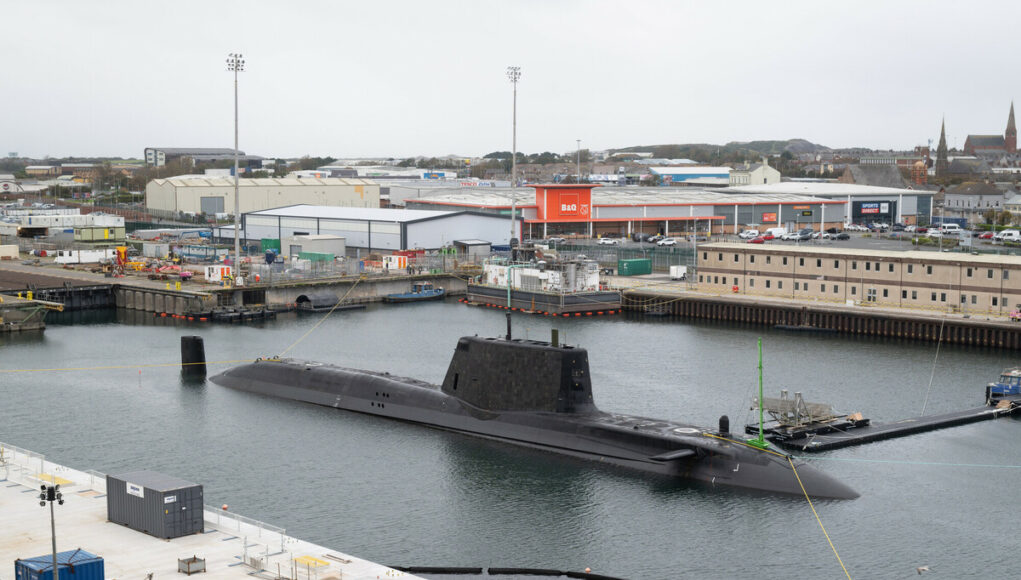
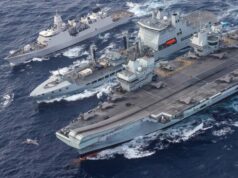
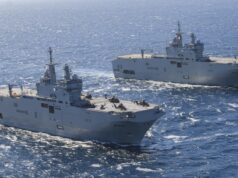

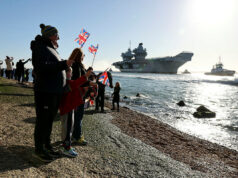


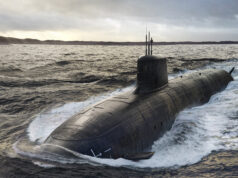
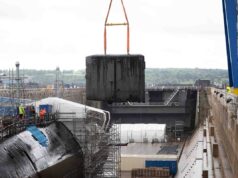
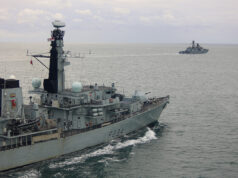
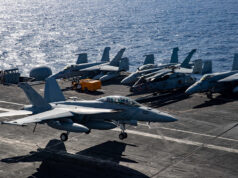

By far the most potent tools in the RN – I’ve heard them compared to a particularly quiet later LA-class boat in terms of the noise they produce, whilst having a sonar suite rivalled only by the American equivalent. Anecdotally, they’re usually talked about in the same conversation as the Russian Yassen and American Virginias, likely on the lower end of that scale, but at such fine margins that the difference is negligible in reality.
Twelve new submarines to replace them is a good idea – assuming roughly 4-8 active at anyone time, that gives you a minimum of one with the CSG, two in the North Atlantic/UK and 1 in the Pacifc, with the potential to surge out significantly more boats if needed.
I thought they were meant to be quieter than the LA-class, but how would anyone know?
A future increase from 7 Astute boats to 12 successors? I’ll believe it when I see it.
My comments came from a former American submariner I was talking to a while back. He said he couldn’t give me exact statistics, but he also said to bear in mind that the condition of a boat makes a big difference to its acoustic signature. A ship fresh out of the dock and with a top crew (as RN crews generally are) will sound much quieter than a more worn submarine. He was also referencing the later models of the LA-class in that comparison, which were arguably closer to the early Virginia-class boats than the first of their class.
Again though, in actual combat, these differences are so minute that any alterations to the situation at sea could negate them altogether.
12 boats is definitely going to be tricky to pull off, but we’ll see. Given the RAN should also be buying five, the costs of various subsystems will drop as more are ordered (thinking reactors, VL systemsm, et cetera). The thing is, you could probably still achieve the same ‘4 boats at sea’ position I mentioned above with just 8-10 new submarines.
Well a Trafalgar was considered better than a flight 1 LA, a pretty good match to a flight 2 LA and slightly behind a flight 3.. the flight 3 LA is considered behind the latests generation of western SSNs, astute and Virginia are both quieter than a flight 3 LA which is quieter is an open question but in 2012 the commander of astute was famous for saying that he essentially handed USS New Mexico it’s arse and which HMG published as a story.
Commander Breckenridge said:
“We met and surpassed every expectation. She is just better than any other submarine I have ever been on.”
“Our sonar is fantastic and I have never before experienced holding a submarine at the range we were holding USS New Mexico. The Americans were utterly taken aback, blown away with what they were seeing.”
Essentially from what I have read the Astute class being such fatboys means they have bigger aperture flank arrays than their peers, making them “probably” the best ASW SSN on the planet..
Other balancers from what I have read are:
A Virginia is not build for speed with a 25+knots speed vs a fixed astute speed of 30+knots
The Virginia class has more processing grunt, which apparently means it’s better at processing sensor information when at high speed transits
The Virginia class has vertical launch tubes making it a better land attack
The Astute class has 6 torpedo tubes vs 4 on the Virginia for better ASW or surface attacks
The Astute bomb room can carry 38 torpedoes or missiles vs the Virginia classes 24.. so can be more focused ASW or Surface attack.
The guy I got this information was an American submariner, who said that the acoustic signature of an Astute (when he encountered the vessel, presumably on exercise) was roughly slightly better than the final LA variants, which would check out with your appraisal as well. That said, he didn’t provide any information on the state of the British boat at the time, so a well-maintained boat would likely be quieter (compared to one that has been at sea for a while).
I’ve also heard that the Astute-class have one of the best sonar systems in service today, with the American equivalent being similar. The differences are so small they’re essentially negligible.
I think it comes from different design philosophies. The modern American Virginia’s being built need to replace the underwater cruisers that were the retiring Ohio-class SSGNs, and so sacrifice some of their attack potential – potential that had already been somewhat limited by the original Virginia spec being to reduce the cost of the previous Sea Wolf-class boats (which are still talked about as some of the quietest subs out there).
On the other hand, the RN built a pure-bred attack submarine: faster, smaller, lighter and with a more torpedo-focused armament. I wouldn’t put too much stock in either the RN or the USN in describing their own equipment though.
To be honest the “only” comparisons that matter are:
1) how much better is an asute vs a Yasan class SSGN
2) how much better is a Virginia vs the Chinese type 95 SSN when it launches..and can it handle the more modern Chinese electric boats in enclosed waters.
Yeah. The Russian nuke boats are still supposed to be very, very good at their roles, but their crews are harder to appraise.
The Chinese will probably remain behind the RN and the French with their newest subs, but parity and eventually a lead will probably arrive by the mid 2040s.
Yes I’ve read a few good technical articles that have tracked Chinese SSN tec.
From what I’ve read they are thinking the last of the type 93As was at the level of a fight 1 LA the type 93Bs which are in serial production and being commissioned launched now ( 6-8 launched since late 2022) with another 6-8 to go over the next few years) are between a flight 1 and flight 3 LA.. so probably close to a Trafalgar class… which is pretty good for a twin reactor SSN..but the type 95 they are now building ( and will probably have 2 commissioned by 2030 ) are going to be single reactor SSNs and probably as good as the present western SSNs being launched now.
I wouldn’t read to much in to top speeds, we sacrificed speed for stealth with the later build T boats when we clad them in anarchic tiles. Added many tonnes of weight and reduced speed by some 2-3 kts. The A boats are no different.
I remember when these were first “Imagined”.
35 years ago.
But just one more to go now.
Does anyone know how many are out on patrol at the moment?
Yes they do.
Astute has just gone into refit, and I think the others are alongside for maintenance right now, with the exception of Anson potentially?
I’m thinking one at the maximum, more likely none. 🙁
Yes there is currently one SSN and one SSBN out
Thanks.
I thought they were meant to be quieter than the LA-class, but how would anyone know?
A future increase from 7 Astute boats to 12 successors? I’ll believe it when I see it.
Jolly good. Carry on.
B&Q in the background just in case something breaks?
Best place to anechoic tiles on the cheap
What, so nobody can hear you singing in the shower?
Great name.
If they’re not at Sea, they’re not useful at all. Same as any vessel.